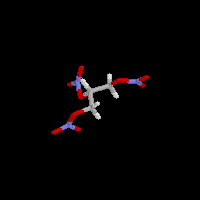UNIVERSITY OF WISCONSIN River Falls
Risk Management
Nitro Explosive Safety
Nitro Explosives

nitroglycerine
PROPERTIES
- Nitrated organics and inorganics constitute the largest class of chemical substances that are known for their explosive characteristics. Organic nitro explosives may be broadly classified under two structural categories: (1) nitro-substituted hydrocarbons and (2) nitrate esters. Examples of nitro-substituted hydrocarbons are nitromethane, trinitrobenzene, trinitrotoluene, and pentantiroaniline. Nitroglycerine, ethylene glycol dinitrate, and pentaerytheritol tetranitrate are nitrate esters.
- These substances are high explosives. They can be initiated by shock, heat, friction, or static electricity. Some nitro explosives can react with certain metals to form extremely shock sensitive compounds.
- All chemical reactions involving nitro explosives implicitly involve significant energy changes.
Identifying Problem Containers
Caution! If there are signs of crystalline material in the bottle neck, threads, or around the cap; or if the product inside appears to have dried out completely, do not move or handle the container and contact the Risk Management Office for assistance.
INVENTORY MANAGEMENT
Purchase nitro explosives in quantities of no more than 100 grams to increase the likelihood that it will be used up before it becomes a problem.
Label the container with the date of when it was first opened.
USE
It is important to understand the chemistry of nitro explosives by reviewing the MSDS for a description of the material and manufacturer's handling recommendations or contact the manufacturer.










